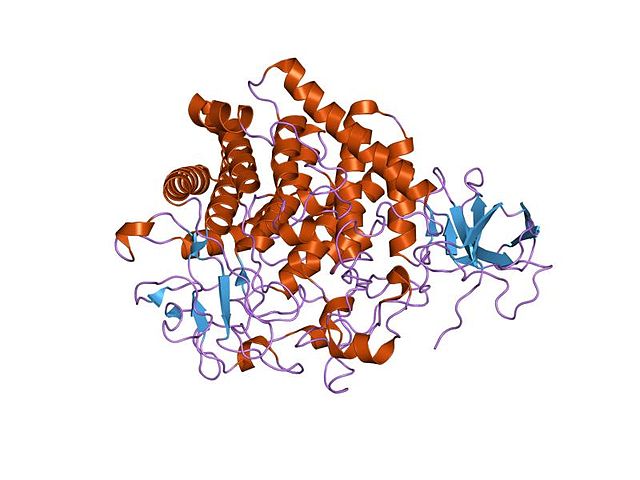What Are Enzyme Detergents and How Do They Work?

Enzymes are byproducts of all living organisms. They are not living organisms themselves; instead, they are proteins that act as catalysts and create many essential biochemical reactions. The human digestive system is a good example: when a substance (food) needs to be transformed into another (excretion), our bodies use enzymes to speed up this process. They break food down in our stomachs efficiently. In this same way, they break down stains from organic compounds such as carbohydrates, fats and proteins.
Enzymes have been used in laundry detergents for awhile, but in very small amounts and limited types. In their early days, they came in a powder form, but this form can be irritating to humans.
To be effective, enzyme detergents need a wide variety of enzymes to tackle a wide variety of stains; in the past, enzymes were not customized or tailored enough to tackle the wide variety of tough stains they are able today with the latest innovations in biotechnology. As a result, our advanced enzymes are also very specific, meaning that they can target very specific types of stains.
Using enzymes can help reduce and eliminate toxic chemicals commonly found in detergents. Examples of such ingredients include...
- Petrochemical surfactants that are commonly used as the main cleaning agent in detergents today.
- Polymers are often used in detergents as anti-redeposition agents. These perform through the phenomenon of steric hindrance where a polymer molecule is so large (thus being less biodegradable) that it gets between the soil and the fabric in order to block it from adhering.
- Traditionally, bleaching agents like chlorine, TAED, and perborate have been used to make clothes look whiter. However, bleaching agents cannot prevent soil deposition or mask particulate soilings on fabrics.
 Not only are enzymes natural and readily biodegradable, they allow us to clean, brighten, and whiten smarter.
Not only are enzymes natural and readily biodegradable, they allow us to clean, brighten, and whiten smarter. For instance, the enzyme cellulase helps take brightness one step further than bleaching agents by not just covering up soils but by physically removing them. Cellulases cleave off damaged micro fibrils and release any captured dirt particles, thus preventing particulate soil from depositing. And since our Phytolase® formula does not act on the intact, crystalline cellulose fibers, there is no loss of tensile strength.
Specific enzymes can now be used in place of old school industrial chemicals paving the way for more sustainable and natural methods of cleaning. This requires investment from everyone — from corporations and from consumers.
So why haven't more companies turned to enzymes? These enzyme technologies are more expensive and most big companies are not willing to invest the money required to make this shift in the cleaning paradigm despite the huge benefit to performance and sustainability.
Dirty Labs created Phytolase®, a new cleaning technology and proprietary 5-in-1 enzyme blend, to replace these harsh petrochemicals found in many laundry detergents today. Our proprietary enzyme blend targets the most common tough stains:
Proteases
- Popular protein-based stains: blood, milk, grass.
- Proteases break down protein-based stains into peptides and amino acids.
Amylases
- Popular starch-based stains: mashed potatoes, oatmeal, corn starch
- Amylases break down complex sugars and starches into component pieces.
Mannanases
- Popular mannanase-based stains: chocolate, and thickeners in many foods, like pudding, ice cream, jelly.
- Mannanases break down mannans, or plant polysaccharides, often found in guar gum and thickeners.
Pectinases
- Popular pectin-based stains: wine, fruit juice, baby food.
- Pectate lyase targets and breaks down pectins, a specific type of plant-based starch that is often difficult to remove.
Cellulases
- Popular cellulase-based stains: egg, beans, pills/fibers from clothes.
- Cellulases target and transform cellulose molecules into monosaccharides and can remove mud, dust, and tiny microfibrils that detach from textile yarns. This helps to remove loose threads and pills that make your clothes look fuzzy and dingy.
- Cellulase can also be effective on egg stains because it helps break the cellulosic walls.
